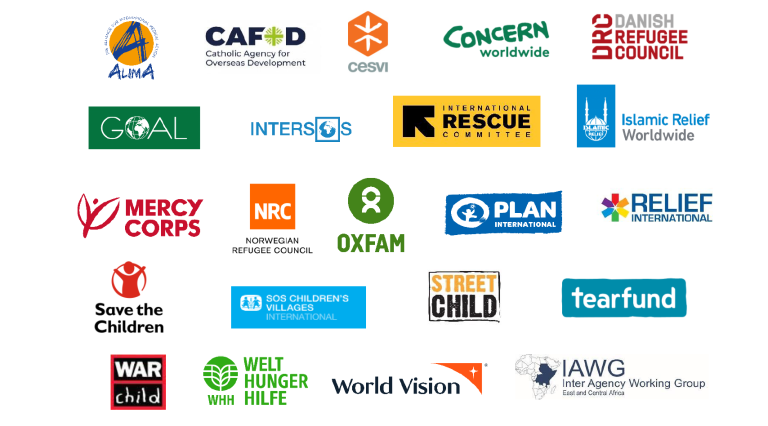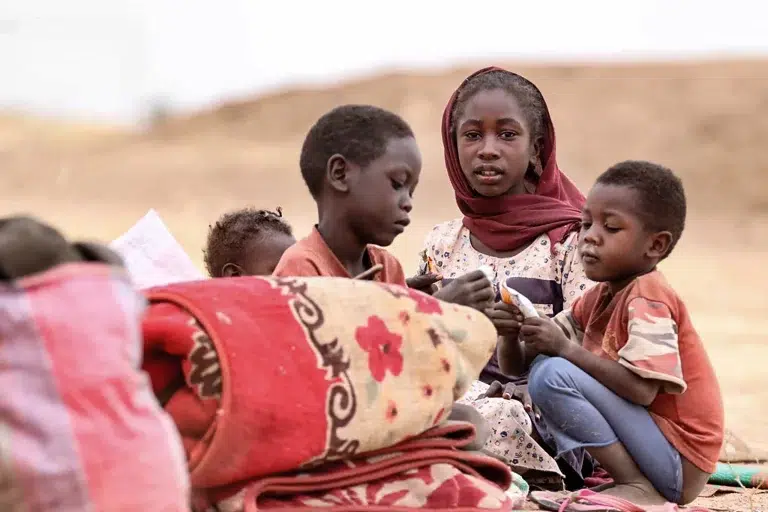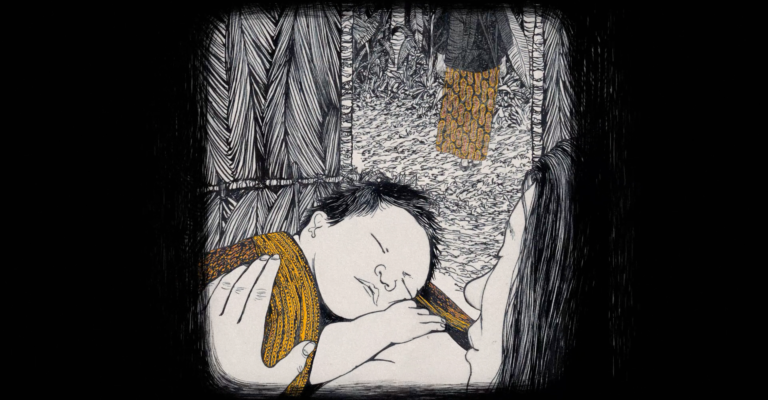West Africa is hit by its worst food crisis in a decade, with 27 million people going hungry. This number could rise to 38 million this June – a new historic level and already an increase by more than a third over last year- unless urgent action is taken. This alert is issued by eleven international organizations in response to new analyses of the March 2022 Cadre Harmonisé (CH), ahead of the virtual conference on the food and nutrition crisis in the Sahel and Lake Chad organized by the European Union and the Sahel and West Africa Club.
Over the past decade, far from abating, food crises have been increasing across the West African region, including in Burkina Faso, Niger, Chad, Mali, and Nigeria. Between 2015 and 2022, the number of people in need of emergency food assistance nearly quadrupled, from 7 to 27 million.
“Cereal production in some parts of the Sahel has dropped by about a third compared to last year. Family food supplies are running out. Drought, floods, conflict, and the economic impacts of COVID-19 have forced millions of people off their land, pushing them to the brink” says Assalama Dawalack Sidi, Oxfam’s regional director for West and Central Africa.
“The situation is forcing hundreds of thousands of people to move to different communities and to live with host families who are already living in difficult conditions themselves. There is not enough food, let alone food that is nutritious enough for children. We must help them urgently because their health, their future and even their lives are at risk,” said Philippe Adapoe, Save the Children’s director for West and Central Africa.
Malnutrition is steadily increasing in the Sahel. The United Nations estimated that 6.3 million children aged 6-59 months will be acutely malnourished this year – including more than 1.4 million children in the severe acute malnutrition phase – compared to 4.9 million acutely malnourished children in 2021.
“I had almost no milk left so I gave my baby other food. He often refused to take it and lost weight. In addition he had diarrhea, which worsened his condition,” said Safiatou, a mother who had to flee her village because of the violence in Burkina Faso.
Dramatic impacts for the future of children
In addition to conflict and insecurity, pockets of drought and poor rainfall distribution have reduced communities’ food sources, especially in the Central Sahel. To make up for the gap, many families are selling their assets, jeopardizing their productive capacity and the future of their children. Young girls may be forced into early marriage and other forms of gender-based violence may increase as food becomes scarcer.
“The rains were scarce. There is no more food. With the lack of grazing, the sheep are getting thinner and this forces us to sell them at a loss. I used to have twelve sheep, but now I only have one left”, explains Ramata Sanfo, a herder from Burkina Faso. “I would like to have my cattle back so that I have enough money and my children can go back to school.”
The crisis in Europe worsens an already disastrous situation
Food prices have increased by 20-30 percent over the past five years in West Africa. While food reserves are dwindling in the Sahel, the crisis in Ukraine is making the situation dangerously worse. According to the Food and Agriculture Organization of the United Nations, food prices could rise by another 20 percent worldwide, an unbearable increase for already fragile populations. In addition, the crisis is likely to cause a significant decrease in wheat availability for six West African countries that import at least 30 percent, and in some cases more than 50 percent, of their wheat from Russia or Ukraine.
Another likely effect of the crisis in Europe is a sharp drop in international aid to Africa. Many donors have already indicated that they may make cuts in their funding to Africa. For example, Denmark has announced that it will postpone part of its bilateral development assistance to Burkina Faso (50 per cent in 2022) and to Mali (40 percent in 2022) in order to fund the reception of people who have fled their homes in Ukraine.
“Our interventions, as humanitarians, are guided by a universal duty of assistance, assistance that should be without exception, and without differentiated treatment”, affirms Dr Moumouni Kinda, General Director of ALIMA. “However, the resources allocated to Ukraine in a few short weeks contrast sharply with the underfunding of many humanitarian crises, particularly in Africa. Ukraine is receiving the right level of solidarity and care, this level should be the standard for responses to all crises, everywhere else.”
Humanitarian organizations are urging governments and donors not to repeat the failures of 2021, when only 48 percent of the humanitarian response plan in West Africa was funded. They must immediately close the $4 billion funding gap in the UN appeal for West Africa to save lives and ensure that these funds support age-, gender-, and disability-sensitive interventions. No one should be left behind.
“The conference on the Sahel crisis scheduled for tomorrow is a unique opportunity to mobilize the necessary emergency food and nutrition assistance and to prove that the lives of people in Africa are not worth less than those in Europe,” says Assalama Dawalack Sidi.
Notes to editors
The eleven international organizations participating in this press release are Oxfam, Action Against Hunger, Save the Children, CARE International, International Rescue Committee (IRC), Norwegian Refugee Council (NRC), The Alliance for International Medical Action (ALIMA), Tearfund, World Vision (WV), Handicap International – Humanité & Inclusion and Mercy Corps.
According to the March 2022 analysis of the Cadre harmonisé (CH), 38.3 million people will be in food and nutrition crisis in June-August if nothing is done, compared to 27.3 million in the same period in 2021, an increase of 40.2% in one year. By country, the projections of people in phase 3 to 5 for June-August 2022 in the most affected countries are: Nigeria (19.5 million), Burkina Faso (3.5 million), Niger (4.4 million), Chad (2 million), Mali (1.8 million).
In 2020, Unicef estimated that 29 million children under the age of 5 (between 6 and 23 months) were stunted (+26%) in the region, up from 22 million in 2000. Other data on malnutrition are from the UNICEF/World Food Programme Hotspot 2022 analysis.
According to the Réseau de prévention des crises alimentaires (RPCA), cereal production in 2021 in the Sahel has declined by 12% and 7%, compared respectively to the 2020 season and the five-year average. The most pronounced declines compared to the 2020 season are observed in Niger (-36%), Mauritania (-18%), Burkina Faso (-10%), Gambia (-8%), and Chad (-6%).
According to the FAO, Burkina Faso and Togo import at least 30% of their wheat from Russia, while Senegal, Liberia, Benin and Mauritania import more than 50% of their wheat mainly from Russia, but also from Ukraine (for Senegal).
Several commodities have increased in price over the past five years in West Africa: Maize (+30%), Millet (+26%), Sorghum (+24%), Rice (+18%). Read also U.N. agency warns Ukraine war could trigger 20% food price rise
On the crisis in Burkina Faso, read the joint press release from NRC, Oxfam, Action contre la faim, Médecins du monde France published on March 10th 2022 Burkina Faso: Second biggest spike in displacement since crisis began
According to UNHCR, more than 4.6 million people are currently displaced or refugees in the Central Sahel (Burkina Faso, Mali, Niger), Chad, and Mauritania, 2 million more than in 2020.
For more information on the increase of forced marriages of young girls and other forms of GBV in times of severe food crisis, read the reports of Oxfam or World Vision (example of South Sudan).
For more information on the changes in donor priorities due to the crisis in Ukraine, read the Oxfam press release: Some governments contemplating raids on aid funds earmarked for other crises to pay for new costs of Ukrainian support. For more details by country on the funding gaps in the UN appeal for West Africa see OCHA’s Financial Tracking Service.
On March 24, Denmark announced that DKK 2 billion has been reallocated from development aid to the reception of refugees in Denmark, including cuts of DKK 290 million in programs in the Sahel.
Contact information
For ALIMA (The Alliance for International Medical Action) in Dakar
Clémentine Colas | clementine.colas@alima.ngo | communication@alima.ngo | +221 76 644 83 47
Nikita Junagade | nikita.junagade@alima.ngo | +221 77 727 95 85
Cover picture : © Adrienne Surprenant / ALIMA






